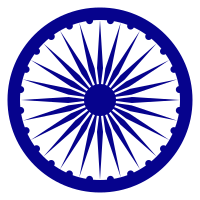Take a piece of cloth, make a unique symbol and you have created a community, organization or a nation! What an amazingly simple and powerful tool! Certainly, one of the oldest communication tool in the history of mankind.
Flags are believed to have been invented in India and China and then gradually spread elsewhere. Surprisingly, nations have not been 'creative' enough with the design of their flags. For example, the flags of Nordic countries (Norway, Sweden, Finland, Iceland) are based on the 'cross design' of Denmark.
 Flags of the Scandinavian countries - from left: Finland, Iceland, Norway, Sweden and Denmark. Taken outside Bella Center, Copenhagen. Author: Hansjorn
Flags of the Scandinavian countries - from left: Finland, Iceland, Norway, Sweden and Denmark. Taken outside Bella Center, Copenhagen. Author: Hansjorn.
Bangladesh & Pakistan seem to have copied from Japan and Turkey, respectively.
Netherlands's flag is supposed to be the oldest tricolor, leading so many tricolor flags - including India & Ireland- India's flag unveiled in 1921 and Ireland became republic in the same year. India took 43 years to 'develop' the flag that was unfurled on 15th August 1947. It had many
disparate versions and numerous 'authors' - starting with Sister Nivedita (1904 - Red & Yellow), an Irish disciple of Swami Vivekananda; Subhas Chandra Bose had a variant of the tricolor with a springing tiger; finally, the chapter was closed in 1947 by a committee headed by Dr. Rajendra Prasad, the first President of India.
More on this in the next posts. But, what have we been discussing?
An independent subject in itself!
Add '-ology' to Latin word vexillum and you get vexillology, defined by the FIAV (
Fédération internationale des associations vexillologiques) as:
The creation and development of a body of knowledge about flags of all types, their forms and functions, and of scientific theories and principles based on that knowledge.
The
International Congress of Vexillology (ICV) is held every alternate year - 2007 was in Berlin, Germany. 2009 will be in Yokohama, Japan.
Interested?

